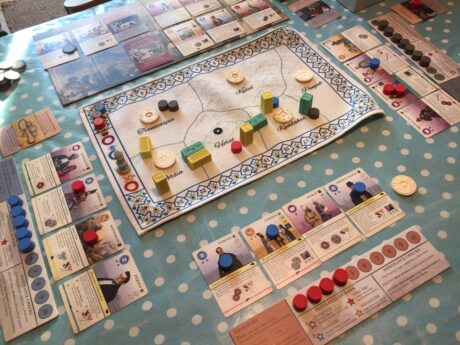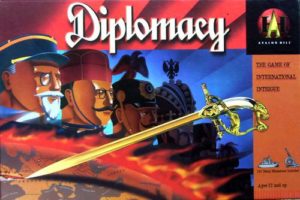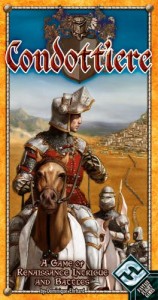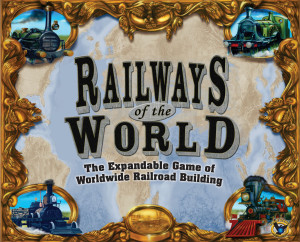- Learning time
- 60 minutes
- First play time
- 40 per player minutes
Pax Pamir
Designed by: Cole Wehrle
*This is a guide to Pax Pamir’s second edition, which is distinguished from the first edition in both rules, victory conditions and components.
In 1830, the “Great Game” of carving up Afghanistan began between British and Russian powers, with the locals unsurprisingly having their own ideas about the nature of their destiny. Pamir (the range of mountains crossing northern Afghanistan, and name of subsequent treaty with Russia) allows you to revisit this dubious history – not as the Britons or Russians, but as local tribespeople seeking to both manipulate the foreign coalitions to your own ends, and making sure you are aligned with the dominant force at the right time. At the start of the game everyone chooses which coalition to be allied with by setting a loyalty dial – you can choose any you like. You might stay loyal to the Afghans throughout the game – but then again, you might not…
Pamir isn’t an easy beast to boil down to a couple of paragraphs – there’s a lot going on. It’s perhaps best to start with how you score points though – the game has a map where pieces are placed to represent both the coalition presence (blocks representing armies or roads depending on their orientation) and the players as well (cylinders placed from your personal supply representing tribespeople). But the actual play is driven by cards, and seeded in the deck are four Dominance cards. When one of these is triggered, there are two potential point-scoring outcomes. One is that a single coalition on the board is dominant: meaning either the Afghans, Brits or Russians have at least four more blocks on the map than their nearest competitor. In this case, players loyal to that coalition will score points based on how much influence they have: we’ll come to influence later. If no one coalition is dominant, however, then the player/s with the most cylinders in play – basically, the most active – scores points instead.
The cards, though, are the meat of the game: they give you actions at the moment they are played, and previously-played cards also supply you with potential actions as well. How do you come by cards? A separate board from the map is the Market: two rows filled with face-up cards that are available for purchase on your turn. Cards on the left are free to take, but any card can be ‘purchased’ as long as you drop a rupee on every card you pass in the market – going from left to right – to reach it. Rupees are scarce – you begin the the game with only four – but you purchase a card with rupees left on it, you get the money too. At the end of a player’s turn the market is refilled by sliding cards to the left and adding new ones on the right.
Buying cards is an action, so let’s talk about actions. Every turn you have just two of them to spend. You can do so any combination of three ways: purchasing a card from the market; playing a purchased card to the table in front of you (- your court); or activating an action on a card in your court. The moment a card is played, the impact actions on it are triggered: a one-off hit of adding armies/roads/tribes to the map, or spies to yours or opponents cards – we’ll come to spies momentarily. Available actions on the cards – once-played – are all about furthering your cause on the map, or sowing discontent elsewhere with spies. Build armies and roads and tax regions for cash, as long as you rule the region in question by having the most of your allied pieces present. Move armies along friendly roads, battle other coalitions or tribes (removing their pieces from the map), give gifts to your allied coalitions or destroy opposition court cards (or indeed, your own) with a Betrayal action. The betrayal can only be achieved using a spy, however, who treat the cards of everyone’s court as a kind of street they can move along from card to card and player to player.
If you have a spy present on any card, you can pay two rupees to betray the card in question and discard it. And spies also double up as devious money-makers: you can’t activate a court card if their are more foreign spies on it than friendly ones without paying the owner of these spies a bribe. This payment structure also applies to the map: if an opponent rules Kabul, for instance, you cannot play a Kabul card into your court without paying them a bribe for the privilege.
Other actions that crop up are the award of money from the bank – on loan, so if the card goes out the game the loan must be repaid – or the instruction to change the favoured suit marker.
The suit marker? Yes. Every card belongs to one of four suits and at any time there will be a favoured suit. If you have cards in your court that match the favoured suit, the actions on them can be taken without using up either of your two ‘free’ actions. Some cards will change the current favoured suit to a different one – and this suit-changing and preference is just one of Pamir’s idiosyncratic sub-battles in a field of many… And some cards are patriots, and aligned with a specific coalition: if you play a patriot that doesn’t match your current coalition loyalty, your allegiance changes to the patriot’s coalition!
Coming back to Dominance cards, we mentioned how having influence in a dominant coalition scores points. Influence is counted in three ways – Patriot cards in your court, gifts given and prizes claimed. Some cards’ betrayal (and subsequent removal from play) by a spy is so valued by the coalition in question that they can be counted as a prize, and kept under your loyalty dial as such, until the next Dominance check. If players tie for influence in a dominant coalition, points for positions are tallied up are distributed evenly between them) The fourth and final Dominance card will score double (allowing for some spectacular comebacks!) and after being activated, instantly ends the game – but only if it hasn’t already. Another twist in Pamir’s spiralling tail is the fact that any player establishing a 4point lead on the score-track wins instantly!
The guru's verdict
-
Take That!
Take That!
Lots. Pamir is a multi-player battle operating on several levels.
-
Fidget Factor!
Fidget Factor!
High on your first few visits, but dropping considerably. However there will be moments where someone needs to play reactively and consider, or reconsider, their next move.
-
Brain Burn!
Brain Burn!
Pamir has a few ifs and buts to consider - but they are all thematically sound. There's complexity here, but everything makes sense in the world of the game. What you are doing is juggling various economies and trying to anticipate opponents moves. Collaboration is possible, but comes loaded with risk. Each turn has the potential for swings of control.
-
Again Again!
Again Again!
Pamir always tells a story, but how that story pans out can change markedly from game to game. The possibility to change loyalties means it's also possible to change strategies, and the game always has surprises in store for you.















Sam says
What a game! We're putting this down as complexity 4 not because of the rules overload - although they're not exactly breezy, they all make intuitive sense and are well-explained in the rulebook - but because of the weight of decisions and the cognitive load of all your juggling: economy, and alliances and spies and armies and whether or not to change allegiances or break alliances and the fact that the game explicitly encourages deals, but also explicitly states they are non-binding. It might not have the friendship-testing levels of nastiness of Diplomacy but there's a delicious, malevolent undercurrent. Money is important, but being cash-rich is no good if you have no presence on the map. You need to rule regions to build and tax them. But even your supposed ally may attack your tribes in a region (but you can't attack coalition pieces you're aligned with). We've tried to give a basic overview here but have of necessity skipped over some important aspects, not least the fact that your political (purple) cards and map presence are inexorably linked: if someone removes your last tribe from the map, your purple card will go to - and vice versa. Pax Pamir is dense enough to have you scratching your head on the third or fourth play. But having loved the designer's equally-spicy Root I wanted to try it and wasn't remotely disappointed. One for all the family? Definitely not. A jolly luck-fest? - Nope. A light, tactical skirmish? That'd be misleadingly understating things. This is tactical for sure, but on a number of levels that provide as many moments of cognitive frustration as they do fist-clenching delight. The designer writes thoughtfully about the history that inspired the game, and that same discipline has been applied to Pamir: tricky, deep, nigh-on impossible to master, and certainly no high-street-breakthrough contender. But brilliant.